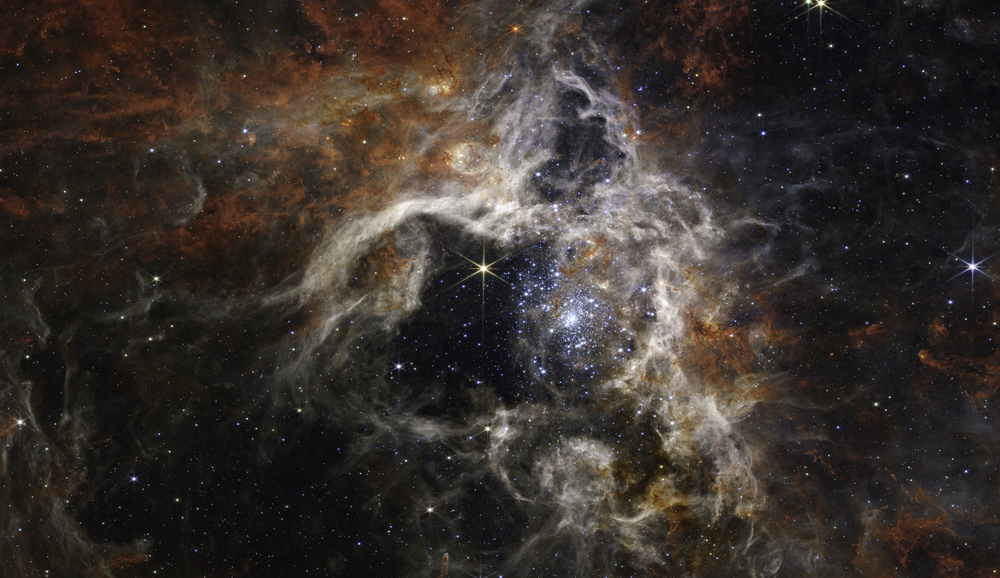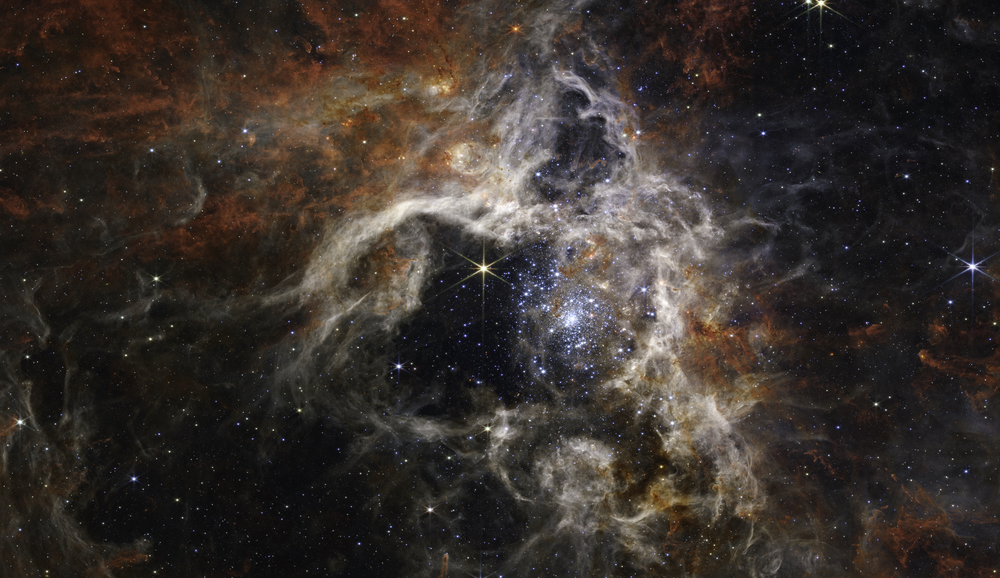Wind Tunnel Experiments Challenge Turbulence Theory
Turbulence is a mesmerizing, chaotic state of fluid motion. It occurs in natural and artificial settings whenever the Reynolds number (quantifying the relative size of inertial to viscous forces in the flow) is large. Through nonlinear coupling, kinetic energy cascades from large scales to ever smaller scales (Fig. 1) until it is dissipated by viscous effects. The fluctuations excited during this process play a crucial role in a diverse range of problems, including planetesimal formation [1], rain initiation in clouds [2], and heat transport within oceans [3]. Remarkably, a new experimental study by Christian Küchler of the Max Planck Institute for Dynamics and Self-Organization in Germany and co-workers provides compelling evidence that current theoretical models for how the fluctuations are distributed across the scales are missing some important ingredients [4].
Turbulent flows are complex. Quantitative predictions of their properties that are derived directly from the Navier-Stokes equation, without ad hoc assumptions, are accordingly scarce. Most theoretical approaches have perforce been phenomenological, the most famous being Andrey Kolmogorov’s groundbreaking 1941 theory, nicknamed K41 [5]. This mean-field theory assumes that the multiscale properties of the turbulent fluctuations are governed by the average cascade of kinetic energy passing through the scales and by the fluid viscosity. In K41 Kolmogorov went on to propose the existence of an inertial range, which corresponds to an intermediate range of scales over which viscous forces could be ignored relative to inertial forces and where the details of the large-scale forcing are unimportant. The theory predicts that the statistical properties of the fluctuations vary with scale as power laws whose exponents are “universal”—that is, independent of the Reynolds number.
Although some of K41’s predictions are quite accurate, the theory does not describe the intermittent fluctuations that were subsequently discovered to be ubiquitous at small scales and that violate universality. Subsequent attempts to account for intermittency included work by Kolmogorov himself [6] and multifractal models [7]. Despite their differences, the theories all predict that the statistics of turbulent fluctuations vary with scale as power laws.
At the smallest scales of the flow, power-law behavior is indeed expected. All that is required is that the flow fields are smooth at these scales, which should be the case because of the diffusive effects of viscous forces. However, in the inertial range, where flows are not necessarily smooth, the expectation of power-law behavior stands on less secure footing. The one exception is Kolmogorov’s so-called 4/5 law for the third-order statistical moment of the velocity increment (the difference in the fluid velocity at two points separated by a distance r). Kolmogorov derived an asymptotic solution for this quantity in the inertial range from a suitably averaged form of the Navier-Stokes equation, and it has the form of a power law. However, for statistical moments of any other order, power laws are not guaranteed. Nevertheless, experiments and numerical simulations of the Navier-Stokes equation have provided some support for power-law dependencies of moments of various orders. The results never showed perfect power laws, but deviations from them were usually attributed to finite Reynolds number effects. That’s because the theories that predict power laws are derived for the asymptotic limit of infinite Reynolds numbers.
More recently, however, it has been argued that the deviations are not simply due to finite Reynolds number effects but point instead to something missing in our current theories of turbulence [8]. Unfortunately, the data did not extend to sufficiently high Reynolds numbers to clearly reveal the nature of the discrepancies. That’s where the new experiments from Küchler and company come in. They used a state-of-the-art wind tunnel containing sulfur hexafluoride, a tracer gas whose low viscosity compared to air makes it easier to reach high Reynolds numbers. By varying its viscosity (through wind tunnel pressure) and flow rate and by controlling the paddles that triggered the turbulence, the team achieved values of the Reynolds numbers spanning 413 to 5779, an unprecedently wide and high range.
The team focused on the second-order moment of the velocity increments, a quantity that is related to the distribution of kinetic energy among the scales of the flow. According to the power-law prediction, in the inertial range this quantity is proportional to the separation distance r raised to the r-independent power 𝜁2. However, the team’s new data showed that in the inertial range 𝜁2 is not independent of r. Rather, it has a clear logarithmic dependence on r for separations spanning up to two orders of magnitude. What’s more, this logarithmic dependance is independent of the Reynolds number, except for the fact that it occurs over an increasing range of separations as the Reynolds number is increased. These findings constitute compelling evidence that the power-law prediction is not correct; deviations from it are not plausibly due to finite Reynolds numbers, but are in fact a universal feature.
Such clear evidence of systematic departures from power-law behavior is significant because it indicates that something fundamental is missing in current theories of turbulence. The finding is also significant because parameterizations of turbulent flows, such as those used in atmospheric models, are constructed assuming power-law behavior. Those predictions could thus contain significant errors.
What do current theories miss? One possibility is a better accounting for details of large-scale effects, which are assumed to be unimportant in the inertial range. Perhaps these effects protrude down to scales much smaller than previously thought. Alternatively, the quasiequilibrium assumptions adopted in current theories to handle the effects of time dependence of the large-scale flow are wrong. On the other hand, the range of scales over which the logarithmic corrections are observed seems to scale with the fluid viscosity, indicating that viscous effects must also be playing some role. Should this be true, it would prove to be very surprising because the logarithmic region spans scales that are orders of magnitude larger than the scales at which viscous effects are usually thought to be important.
References
- A. Johansen et al., “Rapid planetesimal formation in turbulent circumstellar disks,” Nature 448, 1022 (2007).
- G. Falkovich et al., “Acceleration of rain initiation by cloud turbulence,” Nature 419, 151 (2002).
- R. Ferrari and D. Ferreira, “What processes drive the ocean heat transport?” Ocean Model. 38, 171 (2011).
- C. Küchler et al., “Universal velocity statistics in decaying turbulence,” Phys. Rev. Lett. 131, 024001 (2023).
- A. N. Kolmogorov, “The local structure of turbulence in incompressible viscous fluid for very large Reynolds numbers,” Proc. R. Soc. Lond. A 434, 9 (1991).
- A. N. Kolmogorov, “A refinement of previous hypotheses concerning the local structure of turbulence in a viscous incompressible fluid at high Reynolds number,” J. Fluid Mech. 13, 82 (1962).
- U. Frisch, Turbulence: The Legacy of A. N. Kolmogorov (Cambridge University Press, Cambridge, 1995)[Amazon][WorldCat].
- K. P. Iyer et al., “Oscillations modulating power law exponents in isotropic turbulence: Comparison of experiments with simulations,” Phys. Rev. Lett. 126, 254501 (2021).





